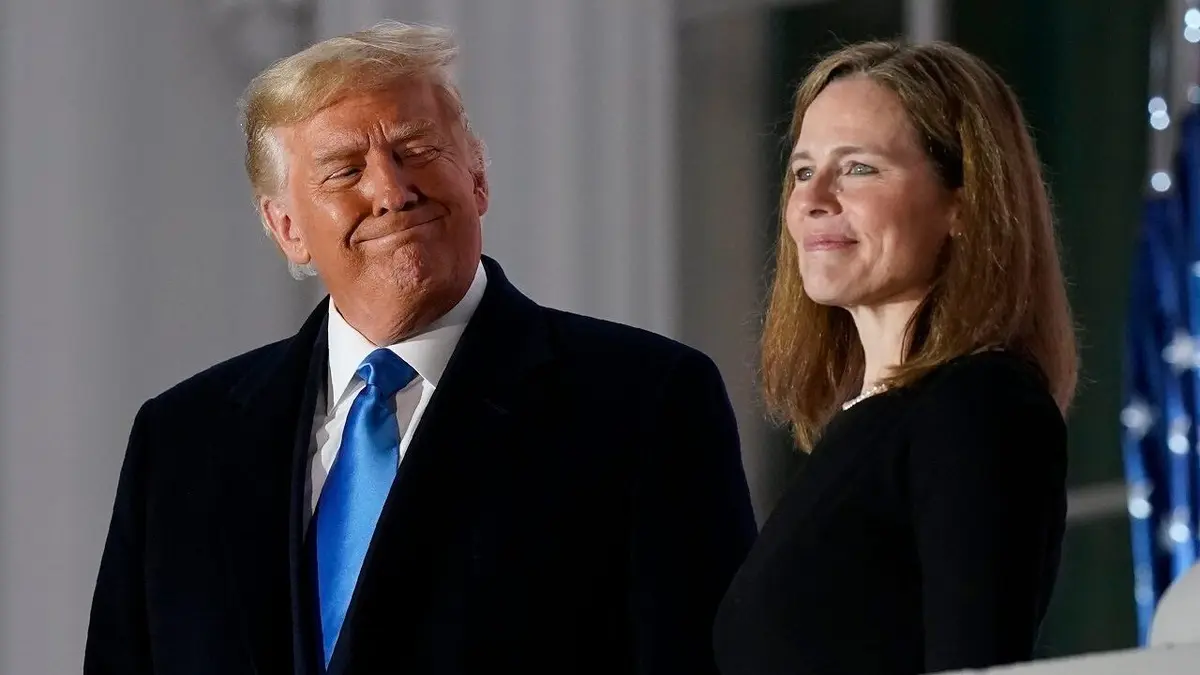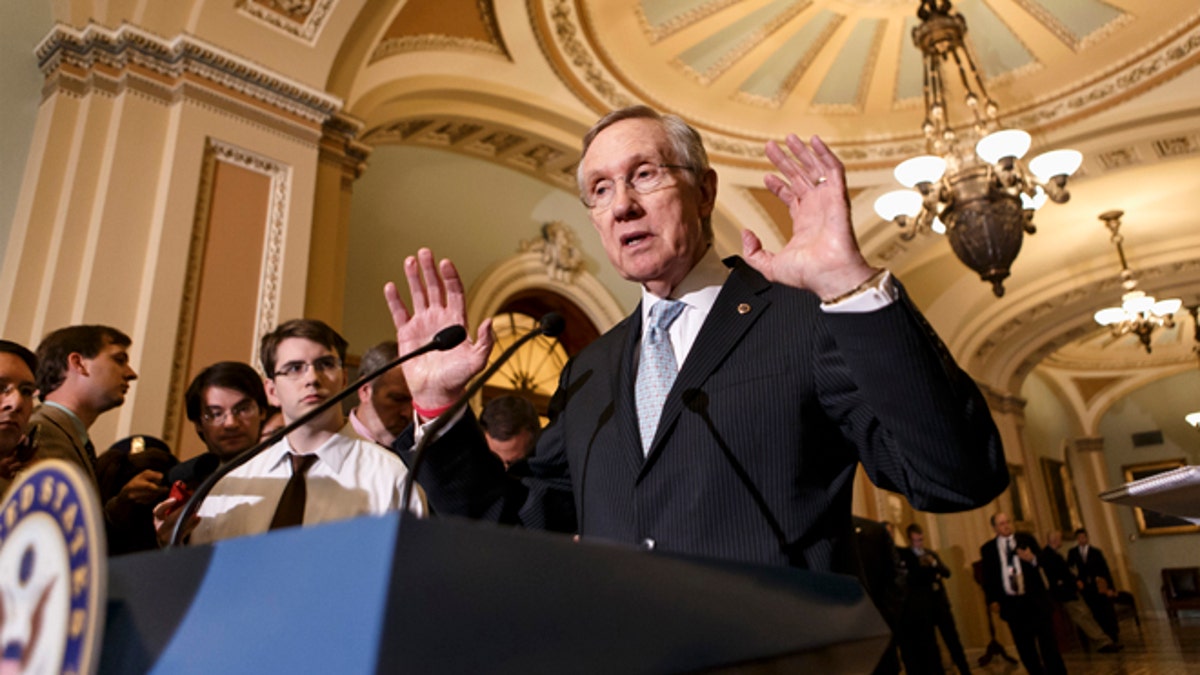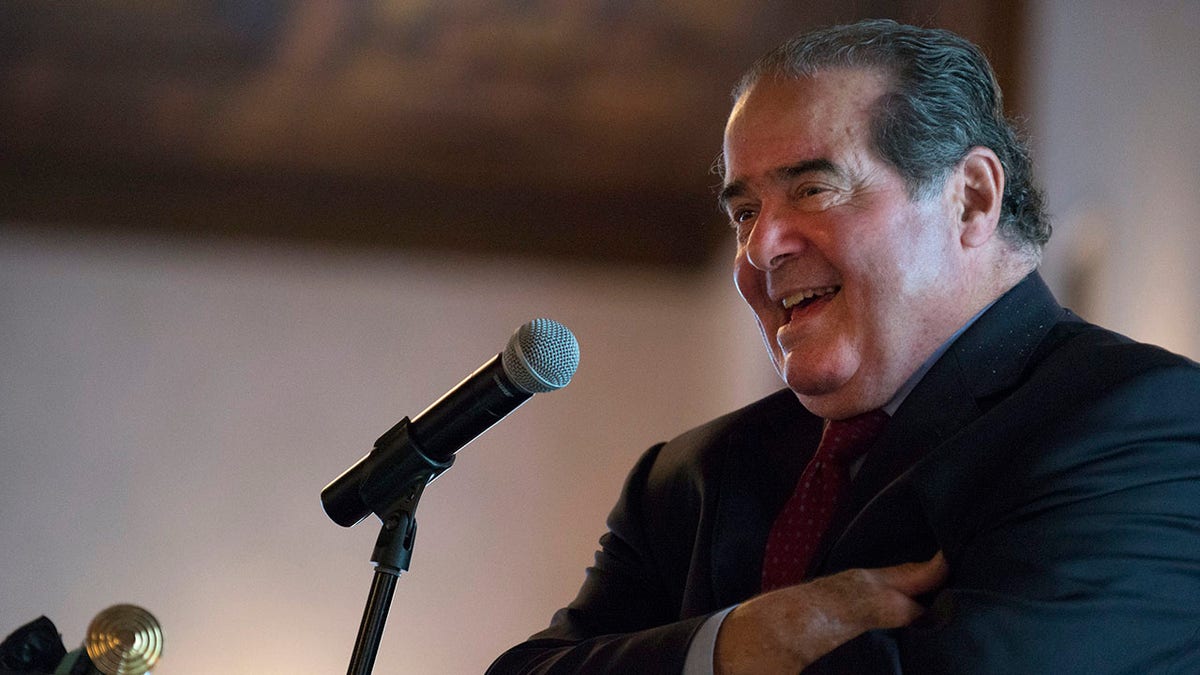Biden says he supports changing Senate rules to codify Roe v. Wade
Fox News contributor Byron York on Biden voicing his support for Democrat senators to codify Roe v. Wade and the Supreme Court's final opinions of the term.
Three persons bear the most responsibility for the recent Supreme Court decision to overturn Roe v. Wade: Former President Trump, late Senate Majority Leader Harry Reid, D-Nev., and Senate Minority Leader Mitch McConnell, R-Ky.
The confirmation of President Trump’s three justices for the high court all flow from a Senate phenomena known as the "nuclear option." We will explain that in a moment. But first, a look at Mr. Trump’s role in all of this.
Speaking frankly, the former President had the least to do with it of the triumvirate. He was the sitting president. When presented with three openings for the Supreme Court, the president tapped three conservative jurists: Justices Neil Gorsuch, Brett Kavanaugh and Amy Coney Barrett. That titled the Supreme Court dramatically to the right, presenting an essential "6-3" majority on the court.
Any other Republican president facing three vacancies would have done the same thing as Mr. Trump. One can argue whether the former president should have tried to select a "consensus" candidate for the Supreme Court. A nominee who could appeal to Republicans and maybe some Democrats.
In fact, a case could be made that the former president tapped Barrett because she was extremely conservative and could potentially help Mr. Trump in the pending 2020 presidential election. Also in the mix was 11th Circuit Court of Appeals Judge Barbara Lagoa, who is conservative. However, she would not have enthused GOP voters (and therefore Republican senators) in the same way Barrett could.

President Donald Trump and Amy Coney Barrett stand on the Blue Room Balcony after Supreme Court Justice Clarence Thomas administered the Constitutional Oath to her on the South Lawn of the White House in Washington, Monday, Oct. 26, 2020. (AP Photo/Patrick Semansky)
So the president went with Barrett.
Let us now explore how Harry Reid was involved in all of this.
Democrats controlled the Senate in 2013. Reid served as majority leader. Reid and other Democrats grew frustrated at Senate Republicans blocking or delaying many of President Barack Obama’s lower court and administration nominees. GOP members could do this because of the filibuster. In 2013, it took 60 yays to end a debate and overcome a filibuster on a judicial branch or administration nominee. Republicans often required Democrats to run those filibuster traps. However, going through all the steps consumed inordinate amounts of Senate bandwidth.
In the summer of 2013, all 100 senators attended a conclave in the old Senate chamber. They appeared to reach an agreement to expedite some nominees. They withdrew plans to alter the filibuster. By the fall, Reid and Democrats had enough of Republican stalling, so in November 2013, Democrats detonated what has come to be known as the "nuclear option."
WARNER REGRETS HARRY REID'S FILIBUSTER CHANGE: 'I WISH WE WOULDN'T EVEN HAVE STARTED THIS'

U.S. Senate Minority Leader Sen. Harry Reid (D-NV) (R), former Secretary of State Hillary Clinton (2nd L) and Vice President Joseph Biden (L) (Alex Wong/Getty Images)
Almost everything in the Senate is up for debate. That is why the filibuster exists. Senators can talk and talk — or delay and delay — any issue that comes down the pike unless they are cut off by something called "invoking cloture." If 60 senators vote to "invoke cloture," debate was then limited to another 30 hours. The Senate could then actually vote to confirm or reject the nominee.
However, Republicans continued to stand in the way of Mr. Obama’s nominees and; therefore, Reid took matters into his own hands in November 2013.
Remember when I said that "almost everything" was debatable in the Senate? Well, not quite everything.
There is one thing which is not debatable in the Senate. That is a failed cloture vote to end debate. Reid set the Senate floor schedule up in such a way that the Senate could revisit that failed cloture vote to end debate on a nominee, but that precise parliamentary circumstance is a procedural cul-de-sac. Moving to re-vote a failed procedural vote to end debate is not debatable. No debate is allowed. It cannot be filibustered, and Reid wanted the Senate to reconsider that failed vote.
GOPer’s could not do anything about it.
REMEMBERING REID: SENATE'S POLITICAL PUNCH-THROWER SAYS FAREWELL, LEAVES TRAIL OF GAFFES
In such an instance, the Senate would vote to block the nominee. It needs 60 yays. Reid then asked Sen. Patrick Leahy, D-Vt., the presiding officer, if it was not the custom of the Senate to require 51 votes to break a filibuster on lower court and executive branch nominees. Leahy responded that it was not. However, Reid appealed Leahy’s ruling — triggering a vote to overrule Leahy. In other words, Reid got the answer he wanted from Leahy (and by the way, Leahy was in on the gig). That would enable him to call a roll call vote to challenge Leahy’s edict. A successful vote to appeal the ruling of the chair requires a simple majority. As such, a majority of senators voted against Leahy and established a new precedent in the Senate. Heretofore, only 51 yays were then needed to terminate filibusters against lower court and executive branch nominees, not 60.

Sept. 24, 2013: Senate Majority Leader Harry Reid talks to reporters just off the Senate floor in Washington. (AP)
That is the nuclear option.
Note that we keep saying that this "nuclear option" only applies to lower court and executive branch nominees. That statement is paramount in this conversation. Ending filibusters for both lower judiciary branch nominees and executive branch nominees now only needs a simple majority in the Senate. However, the Senate left two things intact: 60 votes to truncate filibusters for legislation and Supreme Court nominees.
For starters, no Supreme Court nominee ever required 60 yays to break a filibuster. Late Justice Abe Fortas was already on the high court when he faced a filibuster to matriculate to Chief Justice of the United States. A filibuster killed that nomination — which is why we never had a chief justice named Fortas.
Late Justice Antonin Scalia died unexpectedly in February 2016. Republicans were in the majority in the Senate at that point. By nightfall, and without any consultation with GOP members, McConnell (then the majority leader) made a stunning announcement. He thought it was improper for the Senate to consider a high court nominee in an election year.
JUSTICE SCALIA, CONSERVATIVE LEADER, REMEMBERED IN MASS SERVICE FOR HIS DEVOTION TO FAITH, FAMILY
President Obama still nominated Merrick Garland for the Supreme Court; however, McConnell and Senate Republicans never flinched. That is the reason Garland is attorney general and not an associate justice today.

Justice Antonin Scalia was reportedly 'enthusiastic' about a Trump presidential run. ( REUTERS/Darren Ornitz)
The decision to block Garland (or whomever Mr. Obama might nominate) was McConnell’s idea and his idea alone.
Fast forward to the spring of 2017.
The Scalia seat remained vacant. President Trump is in the White House. Democrats believe Republicans did them wrong by blocking Garland from even coming before the Senate. So, Democrats were poised to launch an unprecedented filibuster against the nomination of Justice Neil Gorsuch.
Republicans lacked 60 votes to overcome a prospective filibuster of Gorsuch’s nomination. McConnell anticipated this, and he similarly backed the Senate into a parliamentary cul-de-sac — just the way Reid did in 2013. As such, McConnell ripped a page from Reid’s playbook and executed "Nuclear Option II." The Senate then established a new precedent for ending filibusters — specifically for Supreme Court nominees. Such nominees would now only need a simple majority to terminate a filibuster and not 60 yays.
SOCIAL CONSERVATIVES 'FRUSTRATED' OVER TRUMP SUPREME COURT JUSTICES' RULINGS

Prominent Democrats and their allies in the media have parroted the talking point that two Supreme Court justices who voted to overturn Roe v. Wade somehow "lied" during confirmation hearings. (Getty Images)
The Senate would not have confirmed Gorsuch without "Nuclear Option II" in place. The same for Kavanaugh and Barrett.
This is partly why the Kavanaugh hearings were so raucous in the fall of 2018.
The audacity of McConnell shocked Democrats. It was one thing for the Kentucky Republican to block Garland in an election year, but it was an altogether different level for McConnell to then muscle through not only Gorsuch and Kavanaugh, but to have no compunction about confirming Barrett days before the 2020 presidential election.
One can certainly argue that McConnell may not have executed the "Nuclear Option II" maneuver had Reid not gone nuclear in 2013. However, some on the left believe that McConnell would have done anything to get Gorsuch, Kavanaugh and Barrett onto the Supreme Court — no matter what.
CLICK HERE TO GET THE FOX NEWS APP
We will never know.
However, we do know that the former president, Reid and McConnell each share responsibility for helping shape the court the way it is now. That resulted in last week’s Supreme Court decision which is embraced by the right and loathed by the left.






